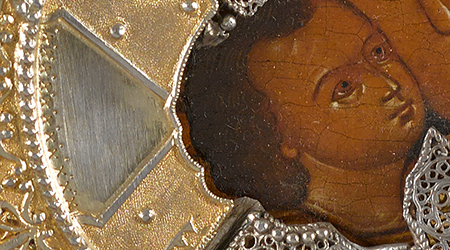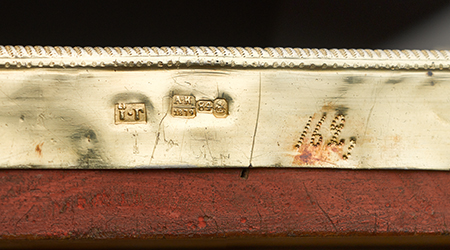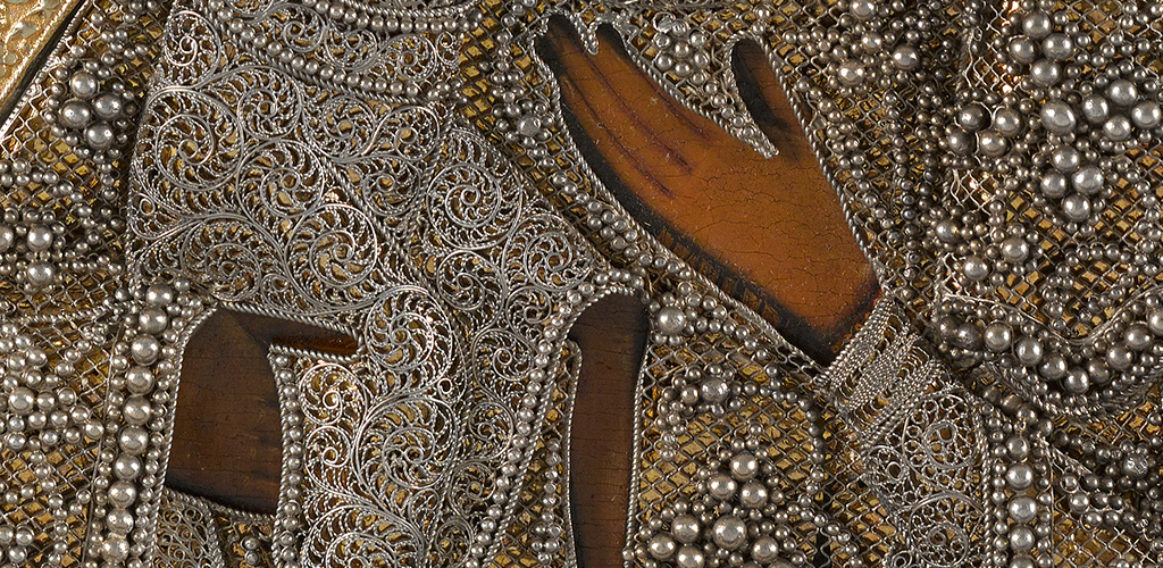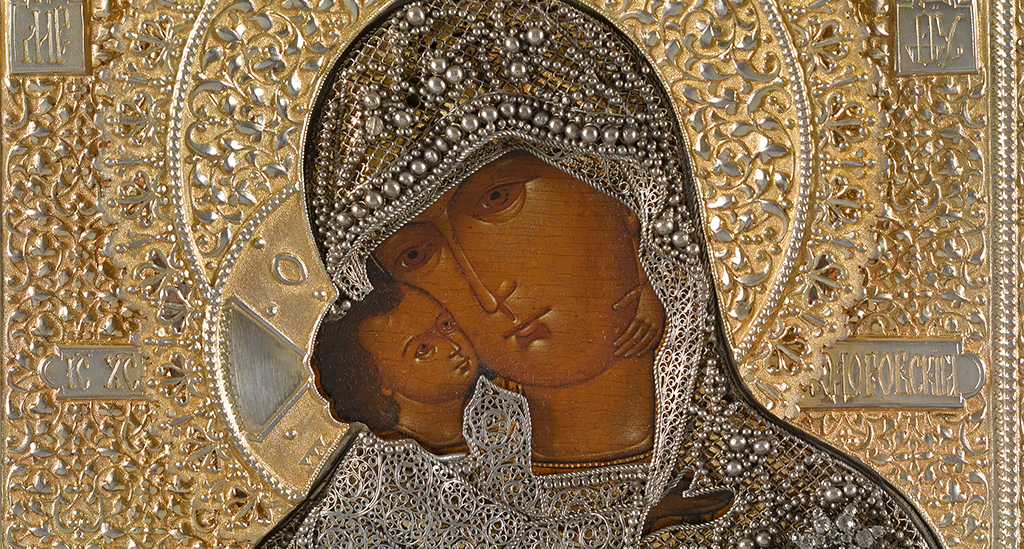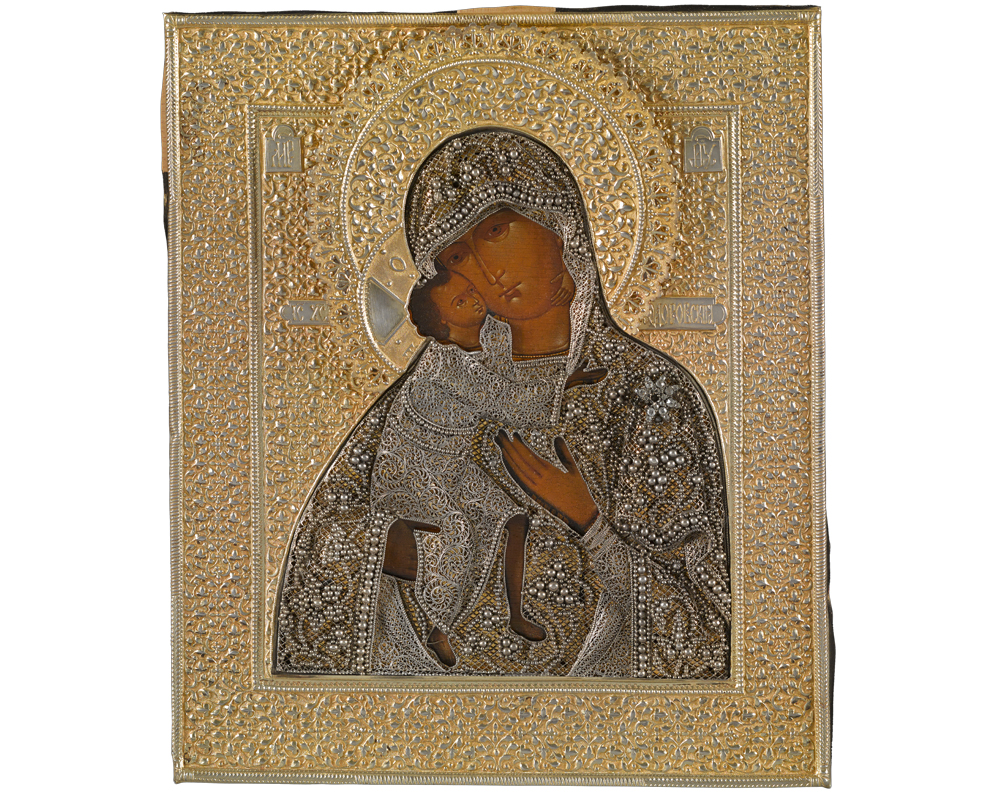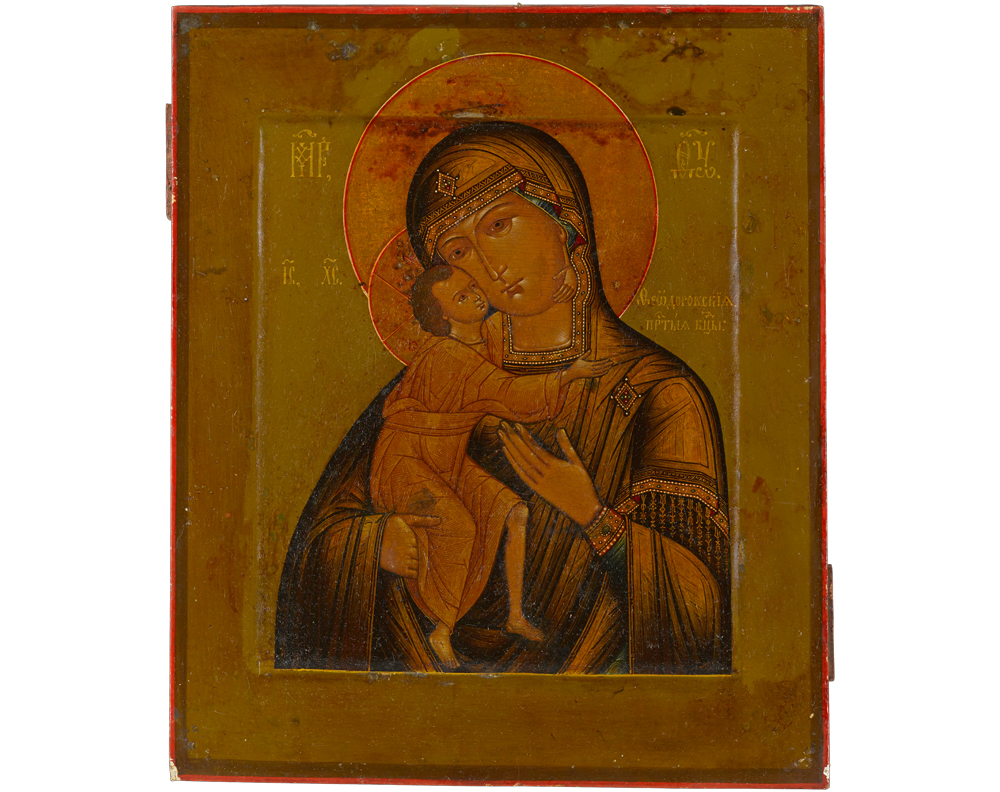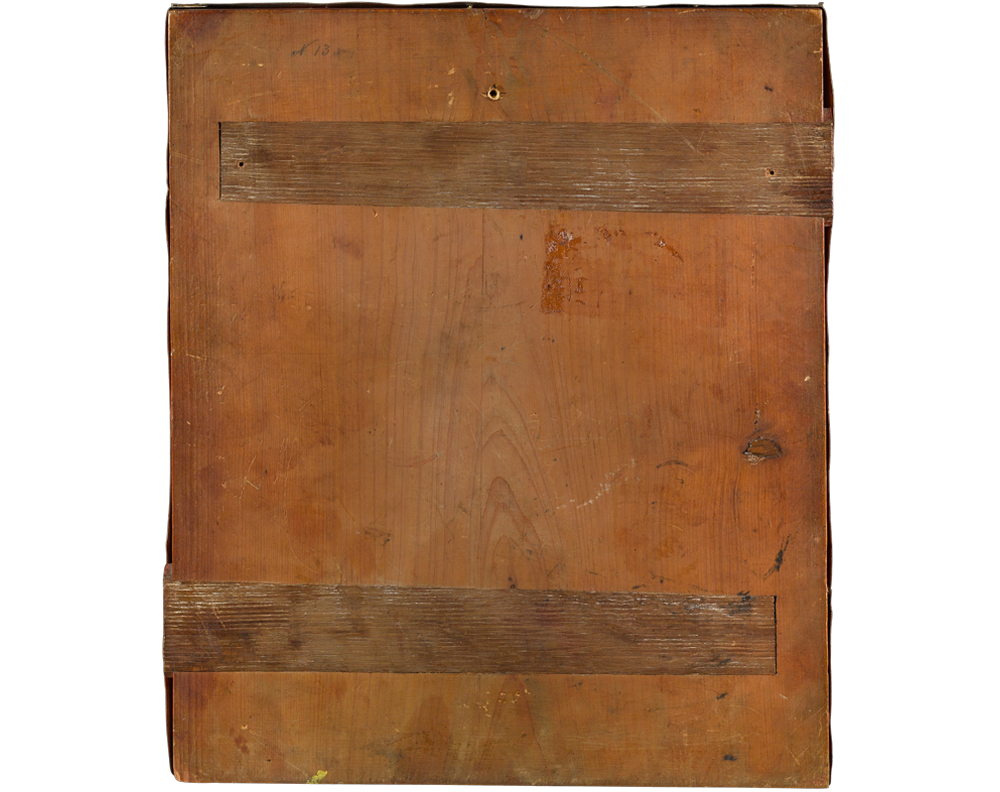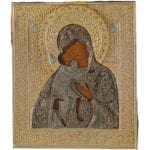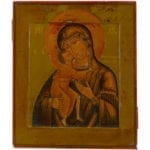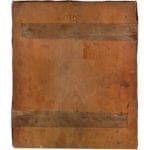Painted in the traditional style, against a moss ground, the icon is encased in a silver-gilt oklad with foliate design, the robes are worked in silver filigree set with pellets. It shows the Mother of God and the Christ Child cheek to cheek. The Mother of God is shown bust-length wearing a richly embellished burgundy maphorion with gold highlighting. The Virgin faces left with her right hand holding the Emmanuel who embraces her by the neck with both hands. The infant Christ is depicted with a bare left leg, a symbol of his future agony on the cross.
The iconography of The Mother of God of Feodorov, also known as Eleousa (She who shows mercy) or Glykophilousa (She who embraces gently) in Greek, has ancient Byzantine origin. The earliest accounts of this icon date back to the twelfth century. It first appeared on August 16th, 1239, to Prince Vasily of Kostroma, the brother of Prince Alexander Nevsky, while he was hunting; the icon was then enshrined in the Cathedral of the warrior St Theodore. The first Romanov was blessed with this icon by his mother Martha on his accession to the throne. This image of the Mother of God became the palladium of the Romanov dynasty.
The feast days are March 27th and August 29th.
